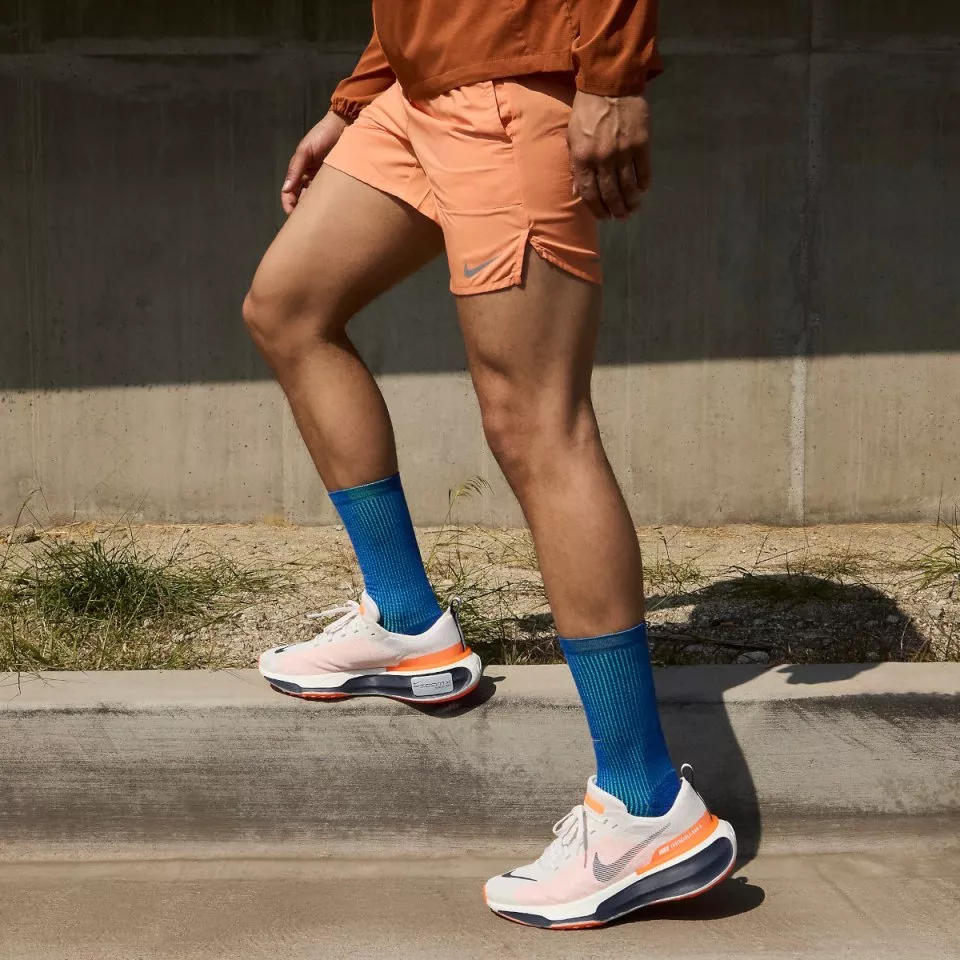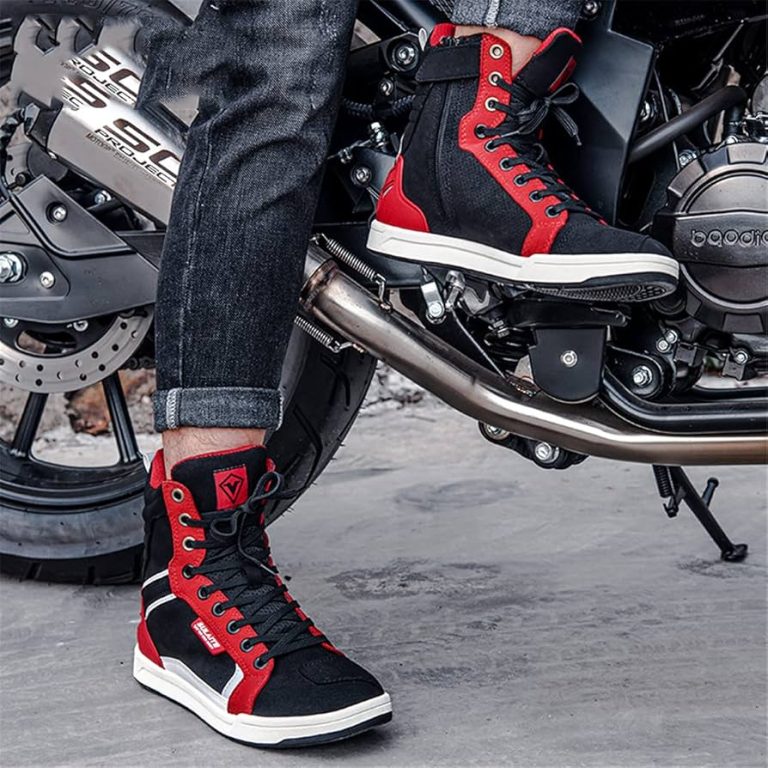
Maximizing Mileage: How Many Miles Do Running Shoes Last?
How to Determine Your Running Shoe’s Lifespan
Determining the lifespan of your running shoes can be puzzling. Yet, it’s crucial for your comfort and foot health. How many miles do running shoes last? Here are ways to figure out when it’s time for a new pair:
- Track Your Mileage: Keep a running log. Note down miles clocked per pair. Most running shoes last 300 to 500 miles. Keeping track helps you estimate when to replace them.
- Listen to Your Body: Pay attention to your body’s signals. Discomfort, pain in your feet or a feeling of less cushioning often indicate worn-out shoes.
- Inspect Shoe Condition: Look for visible signs of wear. Check the tread and cushioning. If they show significant wear, this means they’ve lost their ability to protect and support your feet properly.
- Compare New with Old: If you buy the same model, compare your old shoes with a new pair. Noticeable differences in cushioning and support are red flags that your old shoes are past their prime.
- Professional Assessment: Sometimes, it’s best to consult a specialist at a running store. They can assess your shoes’ condition and advise if it’s time for a new pair.
Be proactive in monitoring your running shoes’ condition. It helps prevent injuries and optimizes your running performance.

Factors That Impact Running Shoe Longevity
Not all running shoes wear out at the same rate. Several factors impact their longevity. Understanding these can help you make the most out of your pair.
Material Quality: High-quality materials often last longer. They can withstand more miles before showing wear.
Running Frequency: How often you run plays a role. Daily runners may need to replace shoes more often.
Running Terrain: Smooth surfaces like tracks wear shoes down less than rocky trails.
Running Style: Your gait and how your foot strikes the ground affect shoe wear. Pronation or supination can lead to uneven wear.
Weather Conditions: Running in rain or heat can alter the lifespan of your shoes. Moisture and temperature extremes may break down materials faster.
Body Weight: Heavier runners may compress cushioning quicker, which could shorten shoe life.
Shoe Care: Properly caring for your shoes, such as cleaning and drying them, extends their life.
Rotation: Alternating between pairs gives shoes time to rebound, leading to longer use.
Taking these factors into account can help you predict and extend the life of your running shoes. Remember to note the [how many miles do running shoes last] guideline but tailor it to your unique situation.
Signs It’s Time to Replace Your Running Shoes
Recognizing the right time to replace your running shoes is essential for maintaining foot health and comfort. Here are several signs that it might be time for a new pair:
- Increased Discomfort: If your runs leave you with sore feet or joints, your shoes may be to blame.
- Visible Wear and Tear: Examine the soles for worn-down treads or any holes. These indicate it’s time for a replacement.
- Cushioning Feels Hard: When the midsole no longer feels responsive and the cushioning turns hard, the shoes are no longer effective.
- Uneven Sole Wear: Check for asymmetrical wear. This could show that the shoes have worn out unevenly.
- Shoes Don’t Fit Well Anymore: If your shoes feel loose and no longer secure properly, they may have stretched out.
- Persistent Muscle Fatigue: Unusual or prolonged muscle fatigue after a run can be a sign of poor shoe support.
- You’ve Hit the Mileage Cap: Remember the rule of thumb that running shoes should be replaced every 300 to 500 miles.
- Painful Runs: Consistent pain during or after your runs, not related to a specific injury, often points to worn-out shoes.
Using these tips, you can assess if your running shoes are still fit for the run or if they have reached the end of their journey. Don’t forget to consider the [how many miles do running shoes last] benchmark, but always listen to what your body tells you.
Tips for Extending the Life of Your Running Shoes
Running shoes are a key investment for any runner. Here’s how to maximize their lifespan:
- Rotate Your Shoes: Use more than one pair for running. This rotation allows each pair time to air out and recover, which can extend their life.
- Proper Cleaning: Keep your shoes clean. Remove dirt after each run and wash them gently if necessary. Avoid harsh detergents and never put them in the dryer. Air drying is safest.
- Correct Storage: Store your running shoes in a cool, dry place away from direct sunlight. Extreme temperatures and moisture can break down the materials quicker.
- Use for Running Only: Reserve your running shoes for runs. Wearing them for other activities can speed up the wear and tear.
- Lace Them Properly: Tying your shoes too tight can strain the materials. Use a snug fit that keeps your foot stable without overstretching the shoe.
- Cushion the Impact: If possible, run on soft surfaces like grass or tracks. These surfaces are kinder to shoes than asphalt or concrete.
By following these tips and keeping in mind the rule [how many miles do running shoes last], you can often surpass the typical mileage cap. Always be mindful of the individual needs of your shoes and how they respond to your running habits.
The Role of Running Style and Surface on Shoe Wear
Your running style has a big impact on shoe wear. How your foot lands with each step can either evenly distribute or concentrate your weight, causing uneven wear patterns. Overpronation, where your foot rolls inward excessively, or supination, where it rolls outward, can both press extra stress on certain shoe parts.
The type of surface you run on matters too. Here are key points to consider:
- Hard Surfaces: Concrete and asphalt can speed up the wear of your shoe’s sole.
- Uneven Terrain: Trails with rocks and roots, cause more stress on your shoes.
- Tracks and Soft Surfaces: A track or grassy field lessens impact on shoes.
Your personal gait and chosen running terrain contribute a great deal to the [how many miles do running shoes last] rule. Adjust your expectations based on these factors to keep your feet healthy and your runs comfortable.
Understanding the Mileage Rule for Running Shoes
The rule of thumb that running shoes should be replaced every 300 to 500 miles is not one-size-fits-all. It serves as a general guide to help runners gauge shoe lifespan. However, to truly understand how many miles running shoes last, you need to consider several personal factors. These include your weight, running style, and the types of surfaces you run on regularly.
Heavier runners may compress their shoe’s cushioning more quickly, shortening its life. Runners with pronounced overpronation or supination may see quicker wear on certain parts of the shoe. Also, those who run on harsh surfaces like concrete will likely need to replace their shoes sooner than those who stick to softer tracks or trails.
To make the most of this mileage rule, track the miles you log in each pair accurately. Note any signs of wear or discomfort as you approach the lower end of the mileage range. This practice will help you better predict when your shoes need replacing. Remember, staying attuned to what your body and shoes tell you is key to preventing injury and ensuring optimal performance during your runs.
By taking a personalized approach to the [how many miles do running shoes last] guideline, you can maintain foot health and get the most out of every run. Track your mileage, listen to your body, and pay attention to how your shoes feel and look to determine when it’s time for a new pair.

When to Rotate and How to Maintain Multiple Pairs
Rotating running shoes is key for maintaining their condition and extending their lifespan. But knowing when to rotate and how to care for multiple pairs is important. Here’s what you should consider:
- Monitor Mileage: Note the mileage of each pair. Start rotating before hitting the high end of the [how many miles do running shoes last] range.
- Even Wear: Switch between pairs to ensure even wear. This can prevent the rapid breakdown of a single pair.
- Match Shoes to Activity: Use different pairs for different activities. Have specific shoes for long runs, speed work, or trail running.
- Proper Care: Clean both pairs after use. Store them in a cool, dry place, and avoid exposure to harsh conditions.
- Mind the Feel: Pay attention to how each pair feels. Rotate out shoes that start to lose cushioning or show signs of uneven wear.
- Condition Based: Rotate based on the condition of the shoes, not just mileage. If a pair still feels great after many miles, it may not need rotation yet.
By following these guidelines and remembering the [how many miles do running shoes last] rule, you can effectively manage multiple pairs of running shoes. This strategy not only helps your shoes last longer but also may improve your running experience and reduce the risk of injury.

The Environmental Aspect of Running Shoe Disposal
When considering [how many miles do running shoes last], it’s also important to address the environmental impact of disposing of worn-out running shoes. Here are some ways to responsibly manage the end of your running shoes’ life:
- Recycle Them: Some brands have recycling programs for their shoes. They turn old shoes into playgrounds or new products.
- Donate for Reuse: Shoes that are too worn for running may still be useful for day-to-day wear. Consider donating them to organizations in need if they’re still wearable.
- Upcycle Creatively: You can repurpose your old running shoes as planters or other home decor projects.
- Find a Local Shoe Recycling Program: Many communities have shoe recycling services. They typically accept athletic shoes for material recovery.
- Educate Yourself: Research the materials in your running shoes. Some materials take longer to decompose than others, making the disposal process more harmful.
By thoughtfully disposing of your old running shoes, you contribute to environmental sustainability. Running shoes last a specific mileage, but their materials can last for decades if not discarded properly. Always look for eco-friendly ways to say goodbye to your worn-out companions.



